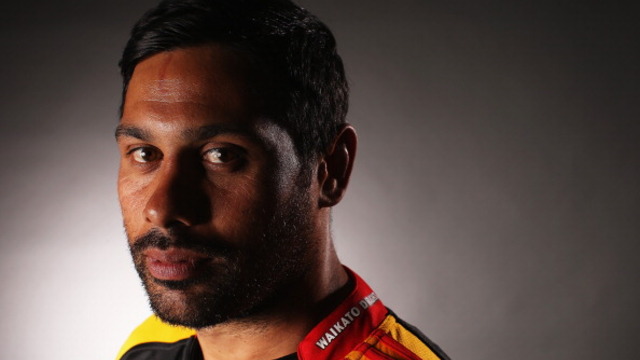The game of rugby is full of rules – some of them very detailed, and others arcane. It pays to know the rules deeply, so that you can find ways to exploit them.
In their match against Argentina in the fifth round of the 2022 Rugby Championship, the Springboks discovered some interesting nuances of lineout law, which they rapidly widened into fully-fledge defensive ‘loopholes’.
The lineout is formed between the 5 and 15-metre lines, and the vast majority of throws enter this space. While the ball is in this zone, the referee holds his arms aloft. This is a sign indicating that the lineout is not over, and therefore players outside it are still obliged to observe a gap of 10 metres between themselves and the set-piece.
This rule no longer applies when the ball moves beyond the 15-metre line.
Law 37.a.III
The lineout ends when the ball, or player in possession of the ball goes beyond the 15-metre line.
At the Estadio Libertadores de América in Buenos Aires, the Springboks exploited this wrinkle to their great advantage. On no less than eight occasions in the match, they threw to the tail in situations where momentum took the receiver beyond the 15m line.
The first example occurred at the end of the first quarter:
The throw from Malcolm Marx reaches number 7 Franco Mostert beyond the 15m line and the referee’s arms immediately drop down by his sides – the 10-metres offside rule is no longer in operation.
That is not the only immediate impact. The decision-making process is accelerated on defence: the Argentine forwards have to decide post-haste how to balance defending the maul with defending the space around the fringes. The tail-gunner at the end of the line is quickly absorbed, and by the end of the clip only two Pumas forwards are guarding the edges of the maul:
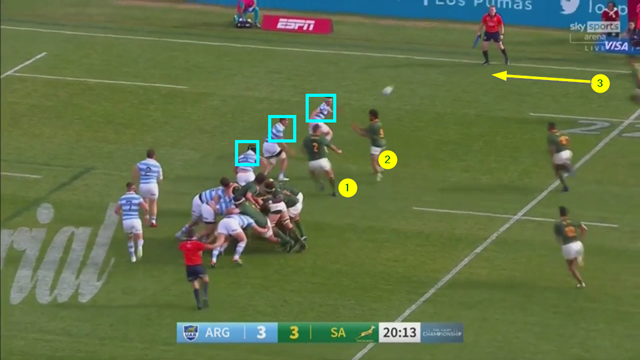
The length of the delivery and the angle of the drive means that a very wide short-side has been created in double-quick time:
The Boks have not had to pull off any spectacular manoeuvres in order to create space for right wing Canan Moodie down the right side-line, and South Africa ended the sequence in rich profit, with a penalty try and a yellow card on the end Argentine defender for an illegal tackle on the scoring play.
With the game reaching boiling point in the second half, the Springboks spread the same principle over five phases of attack:
This time the drive is stopped at source, so the Boks need three extra phases punching into midfield before they can move the ball back to that inviting short-side:
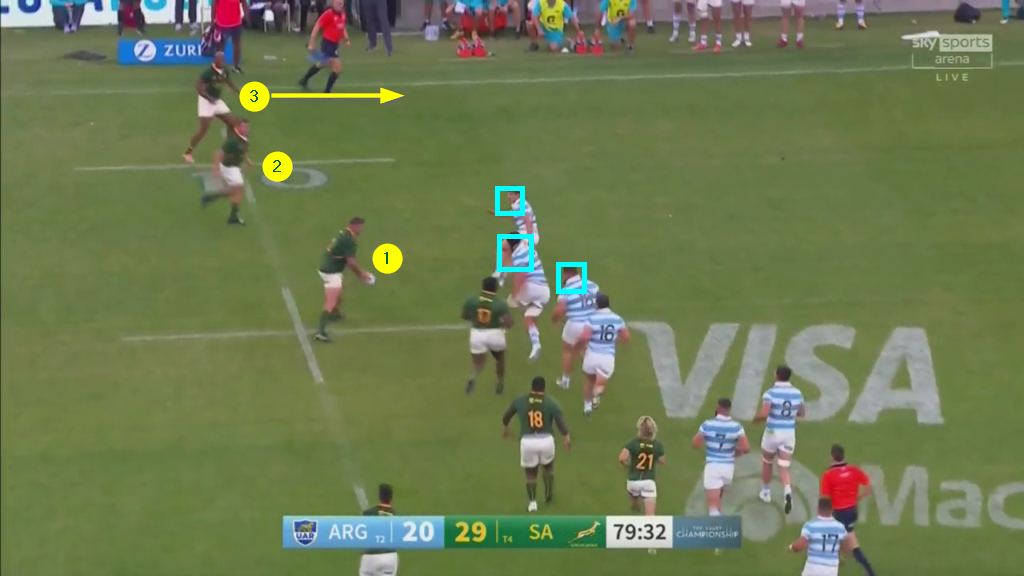
It is the same picture as before, with the onside wing (Makazole Mapimpi) in clear space down the side-line off the pass from Marx.
The defence’s ability to close the 10-metre gap is not always a good thing:
The ball travels beyond the 15m line, the Argentine number 12 rushes up, and South African second row Lood De Jager goes straight through the middle to score. Although this try was eventually called back for a knock forward in the air by Mostert, it illustrates how the decision-making process for the defence is balanced on a knife edge.
Once the Springboks had established that they could attack the short-side off the ‘15m-plus’ throw, they were able to exploit the poor decisions of the Argentine forwards on which side of the ruck to defend.
‘To wrap [to the open-side] or not to wrap, that was the question’:

After yet another throw beyond the 15m line, the line comes up, and forwards have to decide immediately which side of the ruck to defend. By fifth phase, they had clearly got the balance wrong, with Mapimpi standing in midfield behind the site of the ruck. South Africa rolled around the corner to score to the right of the posts two phases later.
Summary
The raw stats are impressive. In all, South Africa threw beyond the 15m line on eight occasions in the game, scoring four tries (one disallowed on review) and garnering three more penalties from the resulting situations.
They forced the Argentine forwards to make far quicker decisions on defence: whether to commit to the drive or stay out; whether to wrap to the open-side of the first ruck, or stay put and defend the yawning short-side which had been instantly created. More often than not, the Pumas got it wrong and South Africa made hay while the sun was shining, all afternoon long.





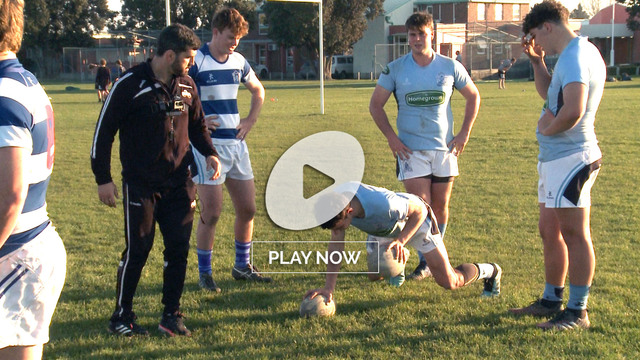
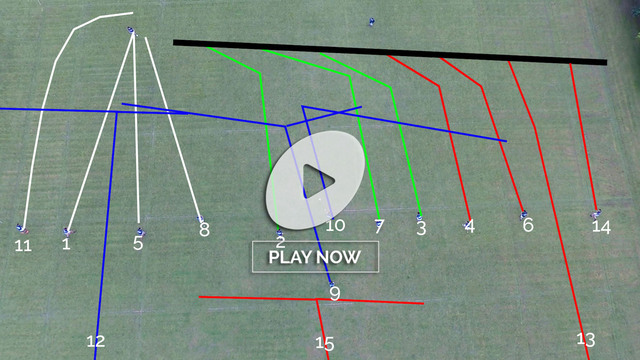
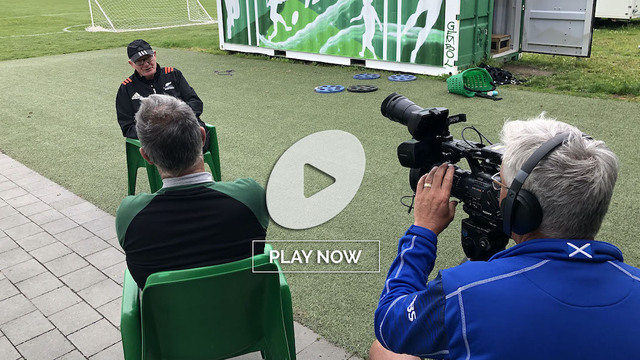
.jpg)
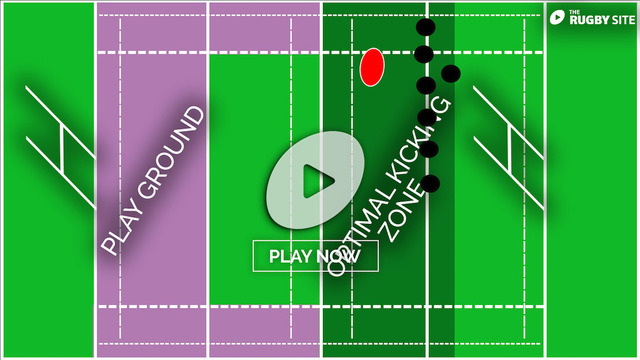
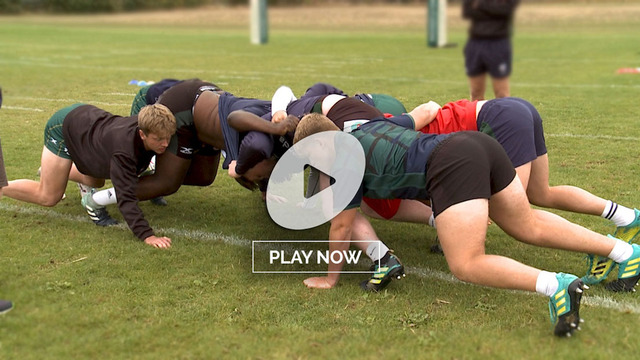
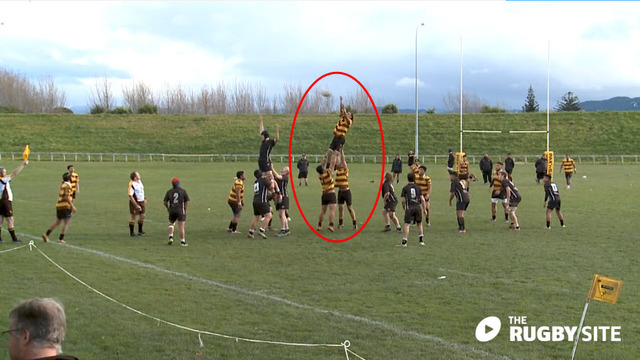
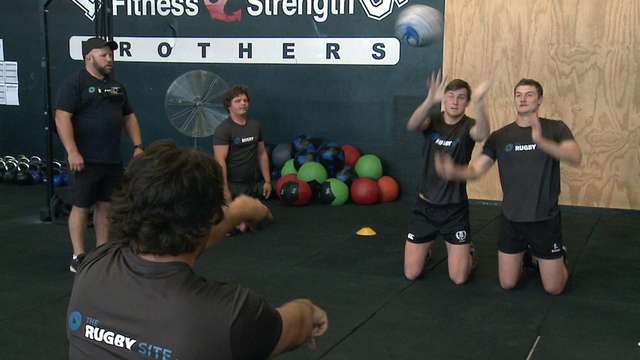
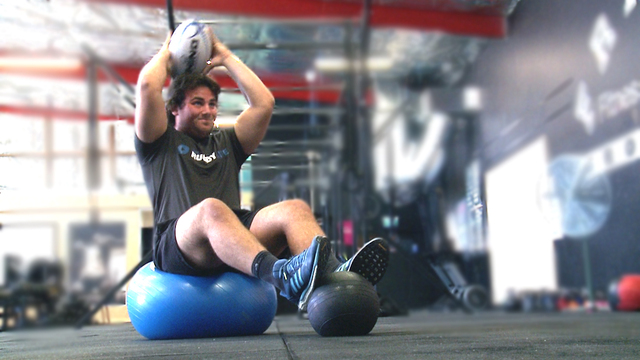
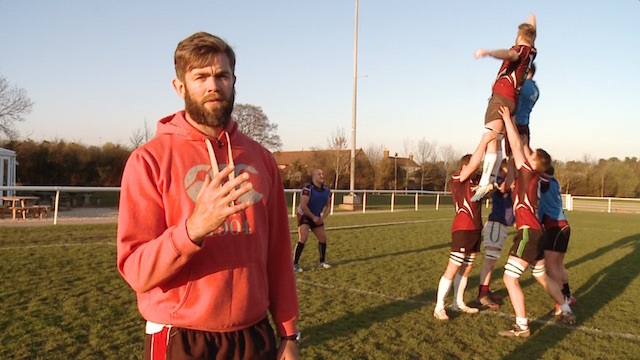
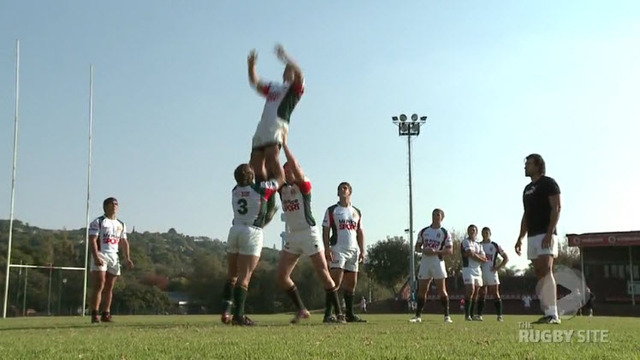
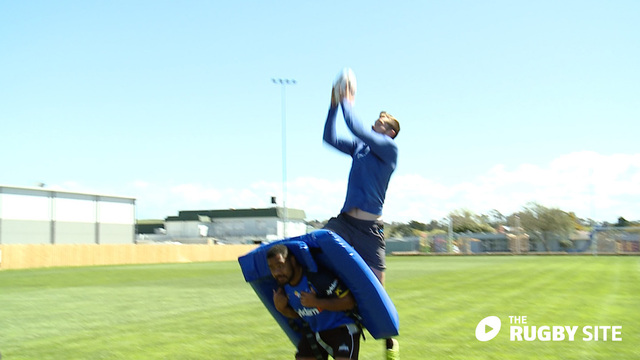
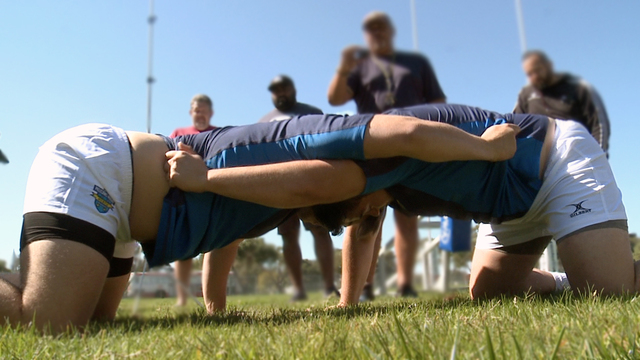
.jpg)
